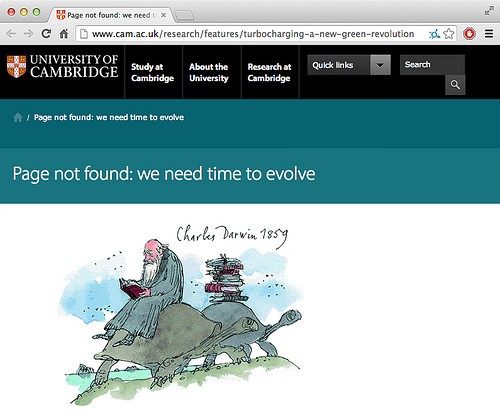In the latest Google algorithm update, significant changes have been made to how search results are ranked. This update has brought about a shift in emphasis towards prioritizing user experience, relevancy, and expertise of content. Webmasters and online marketers need to stay abreast of these changes and ensure their content aligns with the updated criteria. Failure to do so may result in decreased visibility and impact on search engine rankings. If you haven’t reviewed your site’s content recently, it’s essential to do so to avoid potential issues with irrelevant or outdated content.
What Is Dead Content?
Dead content is very simply old and outdated content—the kind of content that may once have been useful to your target audience and relevant to their needs but is now no longer helpful or of interest to them. If you have a great deal of content on your website, dead content may also be slowing down your site and preventing search engines from focusing on the more important pieces of content on your web pages. These pieces are no longer being shared, no longer getting links, and are no longer viewed by anyone (maybe not even you). You need to do something about them.
What to Do
There isn’t a single solution that can be deemed as the best for dealing with dead content. Each situation needs to be approached on a case-by-case basis, and there are several things to take into consideration. Your first instinct would probably be to simply remove the outdated pages from your site, but that’s not always the best option. As a rule, it is only advisable to remove dead content if:
- It is about products/services you no longer offer
- It contains the profiles of employees who are no longer with the company
- It contains postings for job openings that have already been filled
- There is a duplicate or similar blog post
- The page has become a burden to other pages on your site
- The content no longer has even a bit of relevance and is not related to any of your new content
- The content is confusing and negatively affecting the user experience
Now, when we talk about removing outdated content, that doesn’t necessarily mean you simply remove the pages in question. There are a couple of options you can choose from to properly manage those pages.
1. Custom 404 Page
A generic 404 page isn’t advisable because it tells search engines that your website contains errors. It also causes many visitors to leave the moment they see that the page they’re trying to view is no longer available. Rather than using the standard 404 on web pages that contain outdated content, you’d be better served by a custom 404 page.
In a custom 404 page, instead of the usual “404 page not found” message, the user will see a customized message that tells him/her that while the page is no longer available, there are similar or related pages on your website he/she may want to visit. It would help if the customized message contained keyword-rich links to related pages on your site. And remember, the more creative your customized 404 message is, the better your chances are of getting visitors to click the link and stay on your site.

The more creative your customized 404 error message is, the likelier visitors are to stay on your site.
2. 301 Redirect
In most cases, this is the best thing you can do with web pages that need to be removed from your site. Instead of being brought to an error page, users are redirected to a page containing similar or related content. One of the most significant advantages of this solution is that it allows you to retain the link equity (or PageRank or authority) of the page with dead content. If you’ve earned significant link equity for old content, you wouldn’t want to just throw that away by doing a 404 on the page, would you?
Tips: Avoid redirecting a huge number of URLs to a single page (e.g. the Home page, main blog page, etc.). What you need to do is redirect outdated pages to the most closely related page that’s likely to stay relevant for some time. Make sure all the pages you redirect point to the correct URL and include a short explanation as to why the page is being redirected. It is advisable to 301 a page only when it has received a huge amount of traffic and high-quality links in the past.
What if the dead content isn’t confusing site visitors, isn’t hurting other web pages on your site, and still has a bit of relevance to the rest of the site? This would mean it doesn’t have to be removed, right? What, then, should you do with the pages containing those pieces of content? Here are the options:
1. Archive
When you archive old content, people still get the chance to read it whenever they want, but newer content is given more focus. Archiving simply means moving old and outdated content to a less visible part of your website. To do this, you’ll have to remove links connecting those pages with current categories and keep them in a separate category marked specifically as “archive.”
Tips: To make sure the focus of search engine crawlers is on the new content, reduce the sitemap priority of the archived content or remove them completely from the sitemap. Make sure each piece of content you archive has, without doubt, reached (and passed) its peak and will no longer provide you with any SEO benefit at all. Keep in mind that archiving hurts the page, so never archive content that still has the potential to enhance your SEO efforts.
2. Update
If the content still has potential but is outdated, you don’t have to completely scrap it and create new content. It would take much less time, effort, and money to simply update and optimize the old content. Updating may involve correcting outdated information and adjusting the style of writing to cater to current trends. Optimization may involve the use of new technology and taking a new approach toward the subject covered by the content to reflect currently accepted techniques.

Updating usually involves refreshing outdated information and adjusting the writing style to reflect current trends.
Tips: When you update content, there is no need to create a new URL. If the existing URL has ranked well in the past, it’s a good idea to keep it to retain its authority. Rather than creating a new URL, you’d be better off researching new keywords that can help refresh your content. It is also advisable to update and optimize your call to action so you can turn new readers into loyal patrons. Finally, don’t forget to put your refreshed content through a whole new round of promotion; promote it the way you would a completely new piece of content.
3. Consolidate
Check if the dead content you are deciding what to do with covers the same topic as one of your active pieces of content. If so, you may want to consider updating the new content by incorporating some of the information from the old content. After updating the new content, you may then redirect the old content to the new page.
This option is especially helpful when you have high-volume keywords when the previous article did well and the new one is also doing well, and if you have every reason to believe that converting the new article into long-form content will provide you with more link juice and enhance your SEO performance.
Evaluating Your Options
As mentioned earlier, the best course of action to take depends on the specific situation surrounding your old and outdated content. For some, it may be best to do a custom 404; for others, it may be best to just brush up the content a bit. Among the best ways to arrive at the right solution is to understand how each option will impact your site for every situation.
It is also a good idea to divide old content into segments, with each segment covering a different topic. You should then analyze the content per segment, so as not to get overwhelmed by the monumental task. Don’t forget to check off every segment as soon as you’re done analyzing it and drawing up a plan of action. This way, you avoid confusion and unnecessary re-work.
Final Words
Just because some of your content pieces are old and outdated doesn’t necessarily mean you have to completely remove them from your website. There are various ways you can continue to make those pieces of content work to your benefit. While creating new content is always encouraged, there are many instances when updating old ones is a more practical and cost-effective option. What matters most now is that you learn how to strike a healthy balance between these two tactics such that you can enhance your SEO performance and provide the best user experience at the same time.



